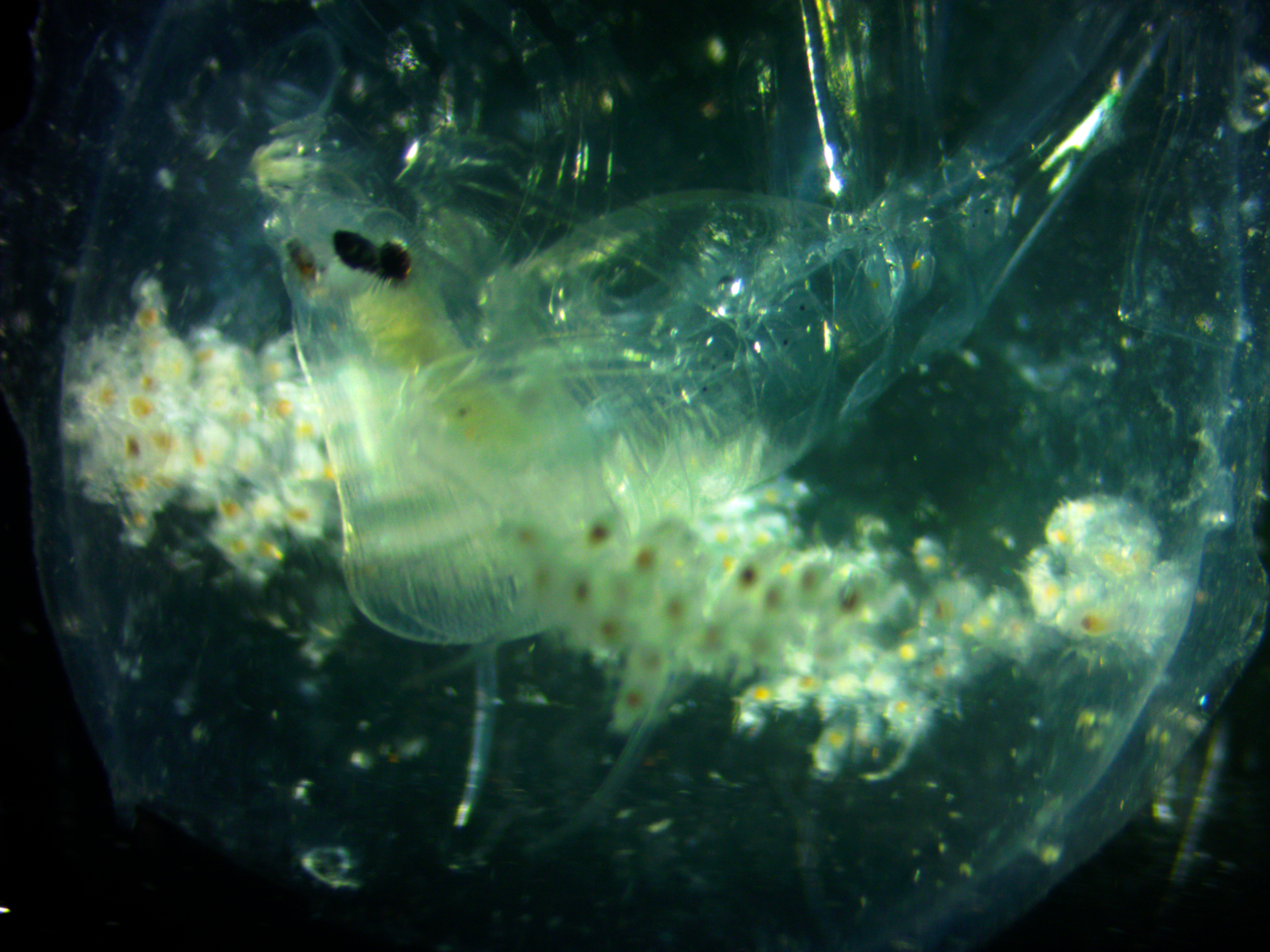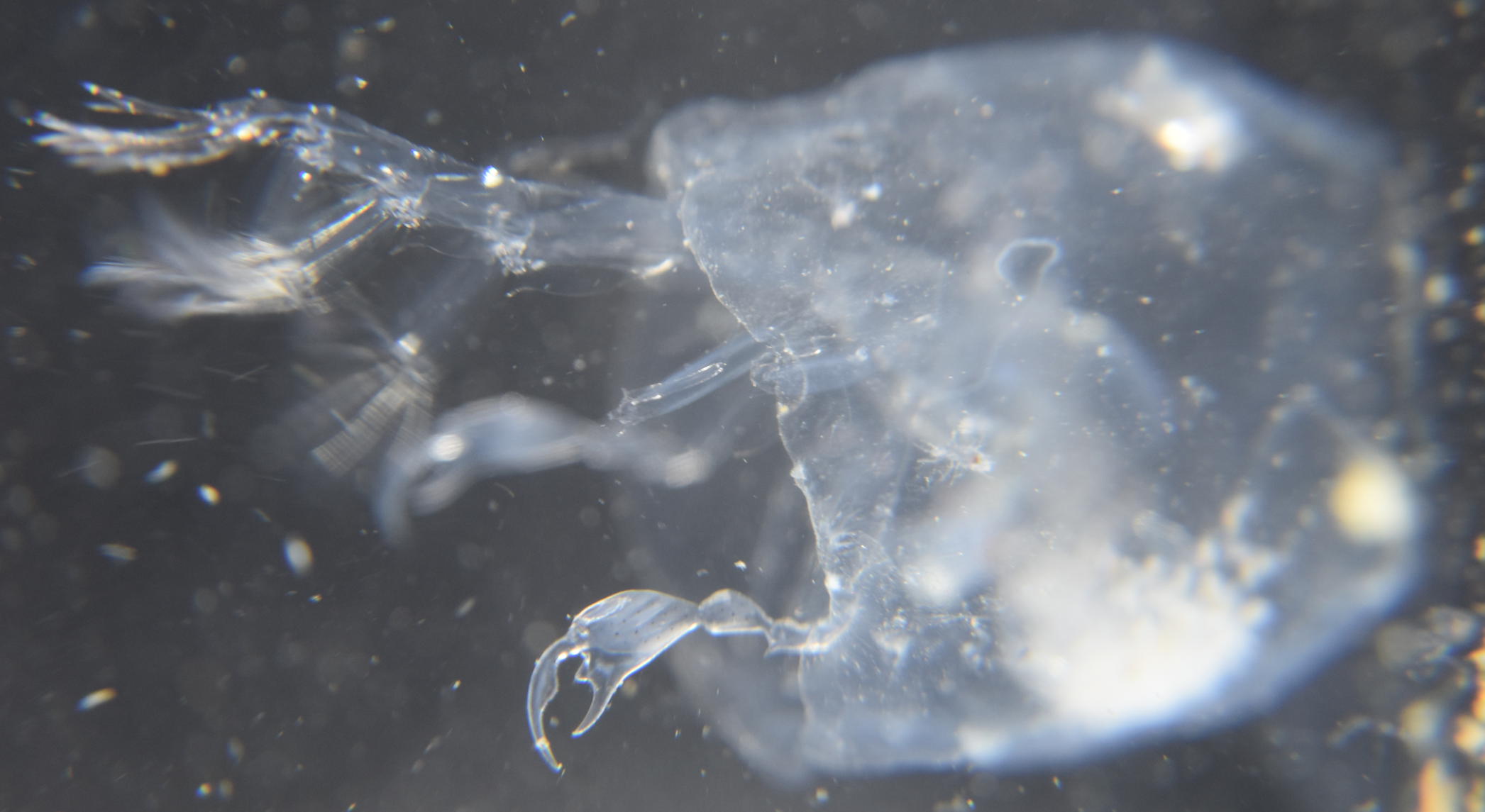Description:
Hyperiidean amphipods are strictly marine and pelagic. This unique
planktonic epipelagic and mesopelagic genus specializes in inserting
its head and anterior body into a salp barrel (tunic), as seen above.
How to Distinguish
from
Similar Species:
The combination of physical structure and the behavior of
swimming along with a salp barrel on its head is unique for this
genus. Several species live in different oceans.
Geographical Range:
North and South Pacific, North Atlantic, Gulf of Mexico, Mediterranean
Depth Range:
In my experience, epipelagic and mesopelagic.
Habitat:
Oceanic waters (pelagic); although sometimes nearshore around docks.
Biology/Natural
History:
This species cuts up salps to produce their distinctive barrels.
Gelatinous species they are associated with include the Ctenophore Beroe, Ihlea punctata, Salpa fusiformis, S. aspera, Thalia democratica, and Pyrosoma sp. In some CalCOFI trawls there has been a positive correlation between Phronima sedentaria and Salpa aspera
abundances (Lavaniegos and Ohman 1998). The amphipods deposit their
young inside the salp barrels as well. Predators of Hyperiidean
amphipods include tuna, salmon, and baleen whales.
| Return to: | |||
| Main Page | Alphabetic Index | Systematic Index | Glossary |
References:
Dichotomous Keys:
Kozloff, 1987, 1996 (simply mentions the species).
Carlton, 2007: (simply mentions the species).
General References:
Scientific Articles:
Diebel, Carol A., 1988. Observations on the anatomy and behavior of Phronima sedentaria (Forskal) (Amphipoda: Hyperiidea). Journal of Crustacean Biology 8:11 pp. 79-90. https://doi.org/10.1163/193724088X00107
Laval, Philippe, 1978. The barrell of the pelagic amphipod Phornima sedentaria (Forsk.) (Crustacea: hyperiidea). Journal of Experimental Marine Biology and Ecology 33:3 pp. 187-211.
Lavaniegos, Bertha E. and Mark D.
Ohman, 1998. Hyperiid amphipods as indicators of climate change in the
California Current. Proceedings of the Fourth International Crustacean
Congress, 1998 pp. 489-509
Web sites:
General Notes and
Observations: Locations,
abundances, unusual behaviors:
Here is a movie of it swimming in the lab.
This
close-up view shows the babies deposited inside the salp barrel and the
large eyes of the amphipod. Photo by Dave Cowles, July 2024
Authors and Editors
of
Page:
Dave Cowles (2024): Created original page
CSS coding for page developed by Jonathan Cowles
Salish Sea Invertebrates web site provided courtesy of Walla Walla University
